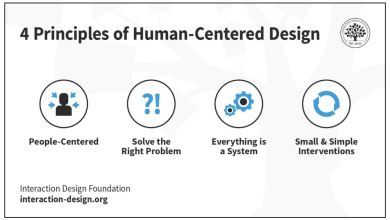
Today’s supply chains are facing pressure from all directions. From rapidly shifting consumer expectations to large-scale disruptions like weather events, material shortages, or geopolitical shifts, the demand for efficiency and flexibility is higher than ever. To meet these challenges, organizations are increasingly turning to predictive analytics. These tools give businesses the ability to use data to plan ahead—reducing guesswork and enabling smarter data-driven decisions across inventory and logistics.
Why Predictive Insights Make a Difference
At its core, predictive analytics involves analyzing patterns in both past and real-time data to anticipate what’s likely to happen in the future. Within supply chain operations, this means gaining visibility into everything from upcoming demand changes to potential shipping delays. Instead of reacting to problems once they happen, companies can prepare in advance and avoid disruptions altogether.
The power of predictive tools lies in their scope. Rather than relying solely on internal sales data, these systems pull in a wide range of inputs: such as seasonal trends, local buying behavior, supplier performance, and even weather forecasts. When integrated well, these insights improve accuracy and help align supply with actual demand.
Improving Inventory Planning
One of the clearest benefits of predictive analytics is its impact on inventory management. Traditional forecasting methods often struggle to account for real-world fluctuations. They may rely on static averages or overlook short-term changes in buying patterns.
Predictive models, by contrast, are dynamic. They adjust in real time, factoring in recent sales, external signals, and market behavior. The result? More precise forecasting. This helps organizations maintain optimal stock levels, reduce excess inventory, and avoid running out of key items. For industries dealing with perishable goods or high storage costs this can have a major impact on their bottom line.
Over time, as these AI-enabled systems learn from new data, they become more refined and responsive. That continuous improvement loop is critical to staying ahead in today’s volatile environment.
Smarter Logistics and Delivery
The impact of predictive tools extends beyond warehouse shelves. They’re also changing how goods are delivered. For logistics teams, tools that account for traffic patterns, weather forecasts, and delivery constraints can help recommend faster, more efficient routes—saving time and fuel in the process.
Predictive analytics also supports broader planning efforts. If demand spikes unexpectedly, AI-powered predictive analytics tools can help logistics teams dynamically adjust routes in real-time, re-allocate vehicles , or shift deliveries between fulfillment centers. On the maintenance side, data from vehicle sensors can be analyzed to spot signs of wear early, avoiding potential breakdowns and out of service vehicles, and keeping deliveries on track.
Building Resilience into the Supply Chain
No supply chain is immune to disruptions. Whether it’s disruptions from natural disasters, political events, or unexpected shifts in demand some disruption is inevitable. However, predictive analytics helps companies stay ahead of these disruptions by helping to detect early signs of trouble. For instance, a change in a supplier’s reliability or news of a regional storm might trigger an alert, prompting teams to make adjustments before the problem spreads.
These systems also support better contingency planning. By running “what-if” scenarios, businesses can understand how various risks might play out and allow them to prepare backup plans in advance, giving them the flexibility to respond rather than react.
Making It Work: From Data to Action
Even with the best tools, success depends on a strong foundation. That starts with reliable data. Clean, consistent, and well-integrated information from across departments is essential. If inventory, procurement, and logistics teams are each using siloed data and systems, analytics will fall short.
One practical starting point is to focus on a small pilot. This might be a single product line, warehouse, or delivery zone. Testing on a limited scale allows teams to work through issues, build confidence, and demonstrate results before scaling up.
Putting People at the Center
As much as we focus on technology, it’s the people using these tools who will ultimately determine their success. Teams need training to understand how to interpret insights and make decisions based on the data. Change management plays a big role as well, especially in organizations used to doing things a certain way.
Another important factor is leadership buy-in. When decision-makers see predictive analytics not just as a tactical solution but as a strategic asset, they’re more likely to support the investments needed to make it work long-term.
Looking Ahead
Looking ahead, AI-powered predictive analytics is likely to become a cornerstone of supply chain strategy. It empowers organizations to be more agile, more efficient, and more resilient. Instead of constantly reacting to problems, businesses can anticipate them, adapt faster, and serve their customers better.
Of course, challenges remain. Data silos, outdated systems, and a lack of in-house expertise can all slow progress. But the companies that embrace predictive tools today will be better equipped to navigate tomorrow’s supply chain complexities and to turn disruption into opportunity.




